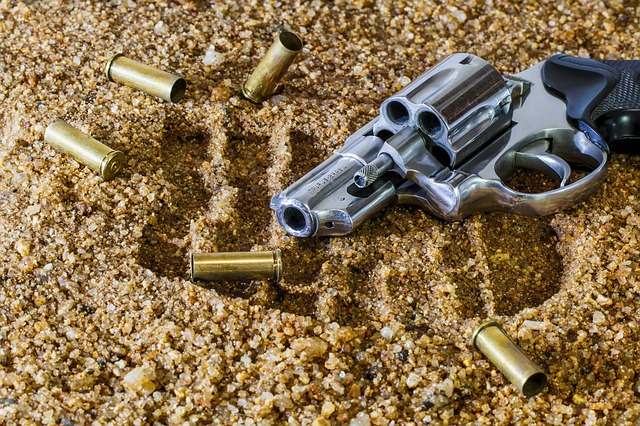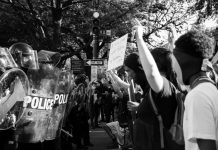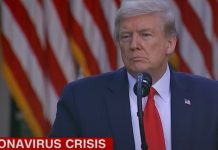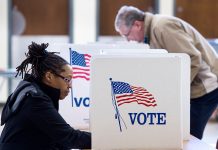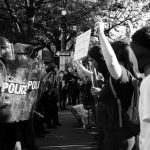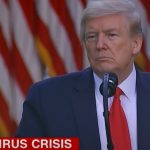In the United States of America, we’ve seen an average of one mass shooting every single day in 2017. It is absolute insanity on the streets. Why does this keep happening? What can we do to make it stop?
The history of the NRA and the Second Amendment themselves is vital to this discussion.
There are many people on both sides of this discussion who say using the mass shootings in the news to discuss these things is in poor taste. But, at this point, if we were to try and wait for the “proper” time to have this discussion, the NRA would get what they wanted, and we’d NEVER talk about it.
The “proper” time to have this discussion would have been decades ago when the NRA first defunded all research into firearms violence, or when Congress voted to make it easier for certifiably insane people to purchase firearms or the hundreds of other ridiculous incidences of greed and ignorance.
For now, let’s start with the Second Amendment itself.
THE MOST CONFUSING AMENDMENT TO THE CONSTITUTION
The Second Amendment is possibly the most debated, confusing, and grammatically incorrect amendment to the Constitution. The exact meaning is still hotly debated to this day. The text of the Second Amendment reads:
“A well regulated militia, being necessary to the security of a free state, the right of the people to keep and bear arms, shall not be infringed.”
In December of 1791, James Madison proposed the Second Amendment. At the time, the idea was to help individual states protect themselves from a tyrannical federal government by providing more power to state militias. State militias exist today in the form of the National Guard.
There are those that believe the amendment gives each state the right to maintain and train formal militia units to protect against a tyrannical government. They say that the “well-regulated militia” clause obviously means that the right to bear arms should be given only to those organized groups.
Those on the other side of the fence believe that the amendment gives every single citizen the right to own guns to protect themselves, free of federal interference. The NRA is firmly planted on this side of the fence along with all of right-wing America.
HOW DID “MILITIA” TURN INTO “INDIVIDUAL RIGHTS?”
So, how did the “well-regulated militia” clause turn into individual rights in the first place? Here is where the history of the NRA and the history of the Second Amendment debate start to intertwine with one another surprisingly.
The National Rifle Association used to have almost no political affiliation whatsoever. The NRA used to be one of the nation’s top gun control organizations from the time of its founding in 1871. They were supporters of gun control, safe handling of firearms, and marksmanship training as well.
The NRA’s founders were Yankee Civil War veterans who thought the war dragged on too long because the urban northerners couldn’t shoot as well as the rural southerners. They started the NRA to teach city folk from the north how to shoot correctly, in other words.
Their motto was:
“Firearms Safety Education, Marksmanship Training, Shooting for Recreation.”
Until 1977, that is precisely what the organization did. They mainly stayed out of politics and concentrated instead on exactly what their slogan said. So what happened in 1977 that changed the organization?
It was a hostile takeover of epic proportions.
NRA’S HOSTILE TAKEOVER AND TIES TO THE SECOND AMENDMENT
Before the hostile takeover of the NRA, a little backstory leading up to why.
Before the 1930s the federal government stayed out of the gun control debate. During the 1930s crime started to rise, so the federal government made some of the earliest gun control laws, called the National Firearms Act. The Act restricted machine guns, sawed-off shotguns, and silencers.
Things quieted again for several decades until the 1960s when several assassinations took place. After the slayings of President John. F. Kennedy, Senator Robert Kennedy, and Dr. Martin Luther King Jr., the government once again stepped in and passed a series of gun-control measures, the largest of which was the Gun Control Act of 1968.
There were a few on what we now call the “far right” who got very nervous when the latest rounds of gun-control measures were introduced in the 60s. These individuals, led by a man named Harlon Carter, subscribed to the argument we all know and love today: If we give the Federal Government an inch, they will take a mile AND all your guns. They equate liberty and freedom with owning a firearm.
Vox reporter German Lopez wrote:
“By describing gun rights as foundational to the nation and liberty through the Second Amendment, it elevated guns and related issues into a cultural and political identity that went beyond the legal technicalities of gun control. That made guns feel crucial to the soul of America, and many on the right embraced the new perspective.”
So, in 1977, during one of the organization’s meetings held that year in Cincinnati, Ohio, Carter and his supporters usurped the current leadership and placed him in charge.
It was on that day the NRA became a gun lobby instead of a hobbyist organization.
WHAT THAT MEANT FOR GUN CONTROL
After Carter and the takeover, the NRA pivoted direction, and they went to work. From the late 70s onward the “individual rights” and “being able to stand up in the face of tyranny” arguments started becoming more and more pervasive. They also began to push the idea that the Second Amendment stretched to personal rights. That is where it all started.
Before that, even the Supreme Court of the United States ruled, although not often, in favor of the Second Amendment only applying to militias.
Yes, you read that correctly. Before 2008, the Supreme Court ruled that the Second Amendment as written meant militiamen owned firearms, and that’s it. Before that ruling, the Supreme Court fully agreed with those on the side of the debate who believe it refers only to militias.
WHAT HAPPENED IN 2008?
What changed things? The case District of Columbia v. Heller, 554 U.S. 570, is what.
In it, the Court examined whether the Second Amendment extended to an individual’s right to bear arms, or whether that right only extended to those in a well-regulated militia. In a “radical departure” from its previous interpretation of the amendment, and in a 5-4 decision, the court ruled that the amendment guaranteed an individual’s right to possess a firearm in the home for self-defense.
The Court made sure to say this didn’t extend to all weapons, nor did it extend to open-carry abilities. It only applied to self-defense in the home.
The Heller case is seen by many as the direct result of that hostile takeover from the 1970s. It took decades to play out, and it took a long time to get the right people onto the Supreme Court bench to make it happen. Thanks to Carter and the NRA, the Supreme Court is now on the side of the debate with the NRA and the “individual rights” crowd.
Well, at 5-4 enough of them are, at any rate.
THE MOST COMPLICATED
This debate is decades old and not going anywhere anytime soon. In the next part, we’ll go over the history of mass shootings and how they have developed over the years, as well as the myths versus the facts that surround such shootings.
Suffice it to say, that while this argument isn’t going away, once you are done reading this series, you will be able to debate with the best of them.
Featured Image Via Pixabay.


